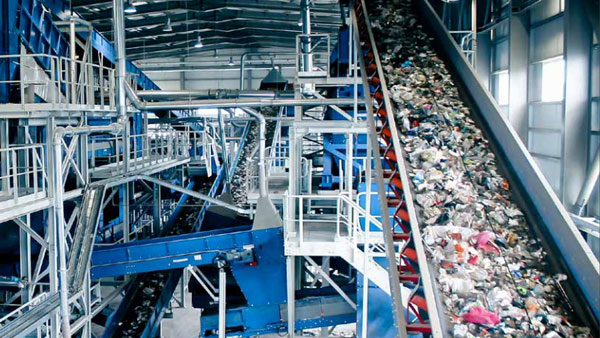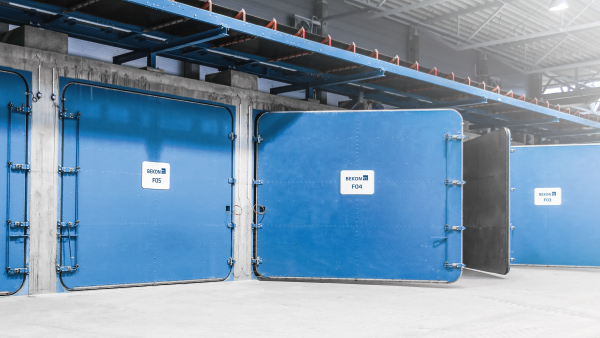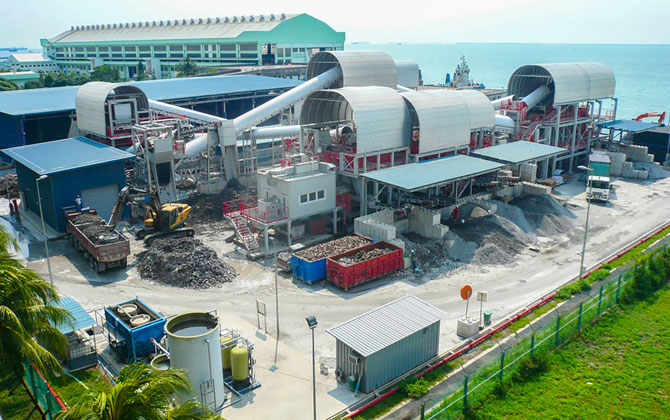Processing of Grate Ash and Slag
Grate ash not only contains recyclable materials, but can also be used in cement production and road construction. It is therefore essential to consider reprocessing.
What are Grate Ash and Slag?
Grate ash - also known as household waste incineration ash or incinerator bottom ash (short: IBA) - is produced during the thermal treatment of household waste. If the household waste is heated above the softening point during the process, the powdery bottom ash becomes a doughy mass. In this state it is called "slag". When slag cools, it undergoes a kind of petrification (sintering) and becomes difficult to treat.
Depending on whether the materials fall through the combustion grate during combustion or are thrown off into the initial system, they are referred to as grate fall-through or grate throw-off; together they form the grate ash or slag. The grate throughfall sometimes even contains organic material and is fed back into the incineration process.
Why Should Grate Ash be Processed?
Not all parts of household waste become ash during thermal treatment. The bottom ash or slag therefore contains a lot of metals and ferrous scrap. It can also contain glass and ceramics as well as minerals – in Germany, for example, the exact composition is defined in the Länderarbeitsgemeinschaft Abfall (LAGA).
The recycling of valuable materials such as iron scrap and metal from grate ash or slag is worthwhile in two ways: Firstly, the separation and processing of these materials is often much more economical than mining new raw materials. Secondly, this process not only conserves resources, but is also more climate-friendly and sustainable.
In addition, the grate ash can also become a recyclable material itself when properly processed. It is one of the legally defined substitute building materials and can, for example, be used instead of cement in the production of concrete or in road construction. Given the millions of tonnes of household waste and grate ash produced annually in Germany alone, as well as the strong demand for building materials, this recycling makes sense not only economically but also ecologically.
How Does the Processing of Grate Ash Work?
The best way to determine which type of processing is economically feasible is by analysing the grate ash produced. Basically, the treatment process is very extensive: a variety of different screens and different types of magnetic separators are usually used. Also eddy current separators adapted to the respective grain size are applied.
The high pH value, abrasiveness and moisture of the input material also place special demands on the technology to be used - especially on the conveyor belts. Another challenge is the very high fines content and, at the same time, few but very large and heavy parts. But we at Eggersmann have the know-how to meet even these high demands.
References in Plant Engineering
Several Examples of Completed Projects!
Plant for Ash Treatment
Singapore
Engineering and planning, procurement, production and delivery of the complete plant engineering as well as installation and commissioning.
Downloads
Transform Your Waste

BEKON Dry Fermentation

Contact
Contact us today! We are happy to support you in solving your waste problem!

Gunnar Beyer
Head of Sales
Eggersmann Anlagenbau
Recycling Plants
Fon +49 5734 6690-227
g.beyer(at)f-e.de

Andre Berlage
Executive Manager
BRT HARTNER
Stationary Machines
Fon +49 5451 50773-31
Cell +49 160 90693161
a.berlage(at)f-e.de
